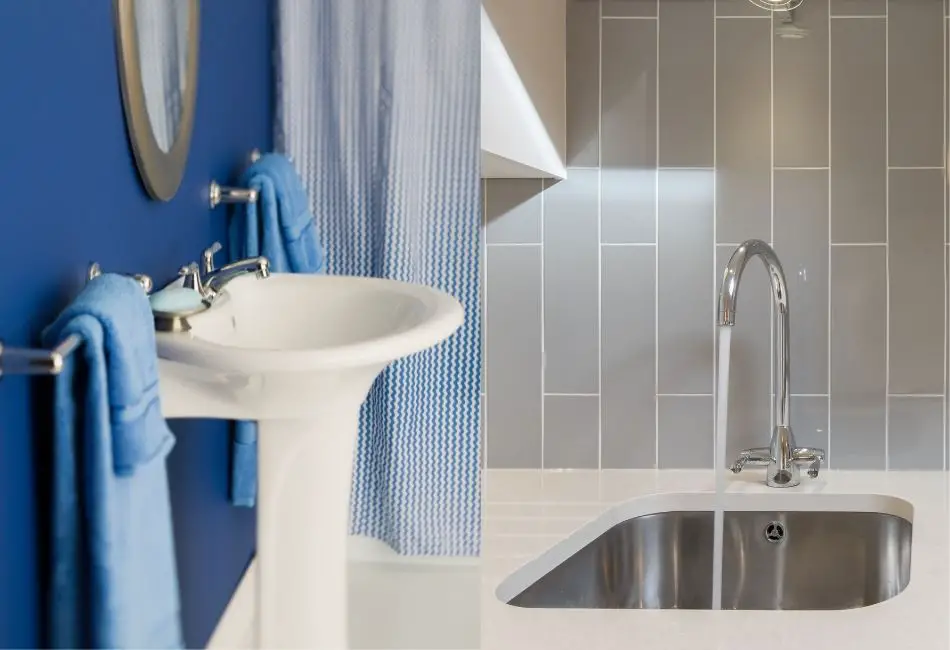It’s a question that has been asked by many homeowners for years – Can you use a kitchen sink in the bathroom? Kitchen sinks are known for their durability and functionality, but does that mean they can be used in other parts of the house? In this article, we will take a look at the features of kitchen sinks and bathroom sinks to see if it is possible to replace a bathroom sink with a kitchen sink. We’ll also discuss some of the pros and cons of using kitchen sinks in place of bathroom sinks.
What Are The Features Of Kitchen Sinks And Bathroom Sinks?
Both kitchen sinks and bathroom sinks are made from different materials, such as ceramic, porcelain, stainless steel, and others. The material used to make the sink will affect its durability, cost, and appearance. This section explores the differences between kitchen sinks and bathroom sinks by looking at their features.
Features Of A Kitchen Sink
The features of kitchen sinks include the following:
1. Material
Kitchen sinks come in a variety of styles, such as stainless steel or porcelain. The most demanded is stainless steel.
2. Size
Kitchen sinks generally come in bigger sizes and have deeper basins which make them better for washing and deeply immersing bowls, plates, large pots and pans. By nature of their depth, there is less oversplash.
3. Straight sides and flat bottom
In general, kitchen sinks have straight sides and flat bottom to give room for more utensils and to arrange glasses and dishes at the bottom without them falling over.
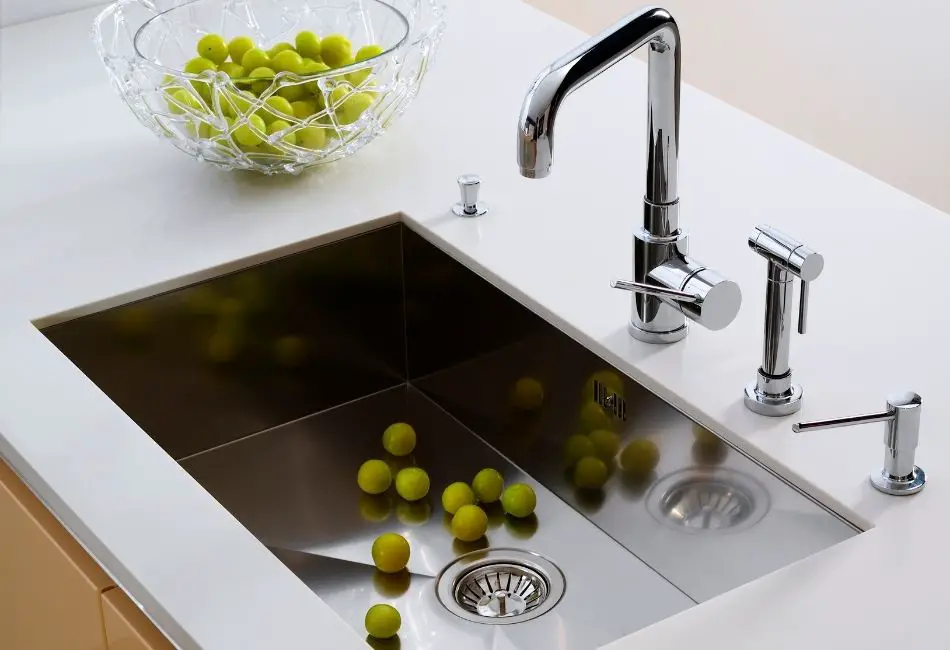
4. The number of basins
They are usually made with one basin that can fit large pots and pans easily, but some models have two separate basins for washing dishes and food preparation tasks. This is extremely popular as it helps you to maximize your kitchen space.
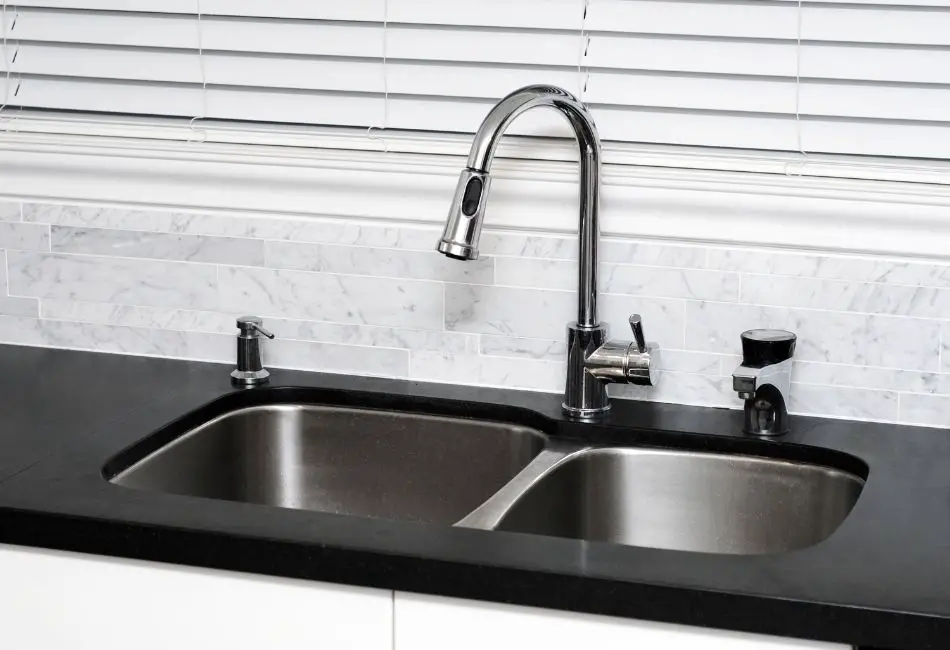
5. Faucet Placement
Kitchen sinks faucets are usually placed on one side of the sink.
6. Additional Features
Kitchen sinks are also often made with an additional prep area or workstation next to the main basin so that cooks can chop food more easily without having it everywhere on their countertops. This is perfect for you if you cook a lot and want to have a higher-grade kitchen.
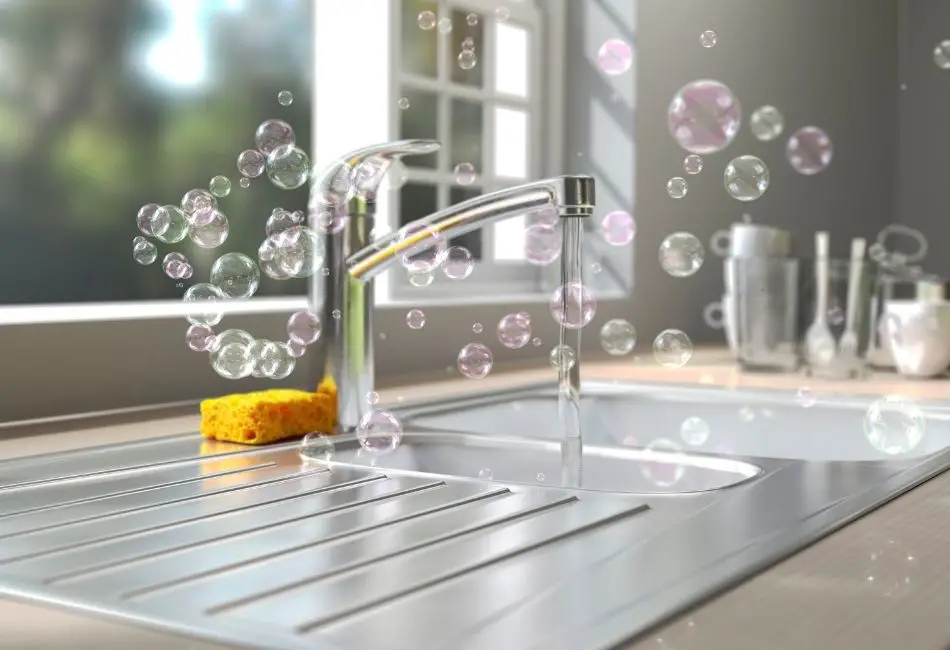
7. Island setup
Unlike bathroom sinks, kitchen sinks can have an island setup when you want to have a separate workflow in your kitchen and also maximize counter space. This is most popular in big kitchens where there is enough space in the kitchen. With this kind of setup, you will need to have an island counter first.
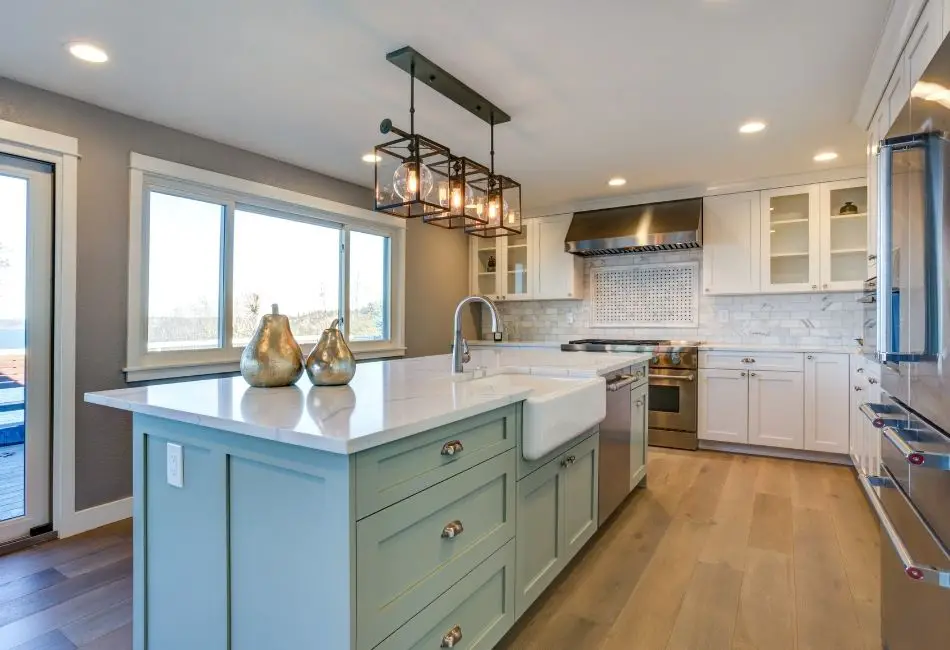
8. Ease of cleaning
It makes perfect sense for kitchen sinks to be cleaned easily because it is exposed to grease, oil, food particles, and dirt every day. Some materials used in making kitchen sinks are easy to clean than others and some do a better job at hiding food particles and water spots better. Others also have antimicrobial properties which help to keep the sink clean and in the best condition possible.
9. Durability
Kitchen sinks are durable because they take a beating in their lifetime. The fact is kitchen sink’s durability comes down to the material used and its use. Stronger materials will obviously handle impacts and temperature better, making them last longer and those that are not used frequently will hold up better in the long run. Even with heavy use, kitchen sinks can last over 10 years.
Features Of A Bathroom Sink
The features of bathroom sinks include the following:
1. Material
Bathroom sinks are made from a variety of materials, such as ceramic or porcelain. One main benefit that bathroom sinks have over kitchen sinks is that they are often more resistant to scratches and stains because of the enamel coating on them. This means that they do not need to be cleaned as often as kitchen sinks, which can get dirty very quickly if you are not careful.
2. Size
Bathroom sinks come in a variety of sizes, but they are typically smaller than kitchen sinks. The main basin is generally smaller than kitchen sinks because bathrooms tend to be much smaller than kitchens and therefore require less counter space.
3. Shape
Bathroom sinks typically have a round or oval shape and the edges of the sink are often curved.

4. Depth
Bathroom sinks are not as deep as kitchen sinks, and they usually do not have a flat bottom.
5. Faucet placement
The faucet is typically placed in the center of the sink.
6. Mounting
Most bathroom sinks are mounted to the wall or countertop. This makes sense because of the limited space in the bathroom.
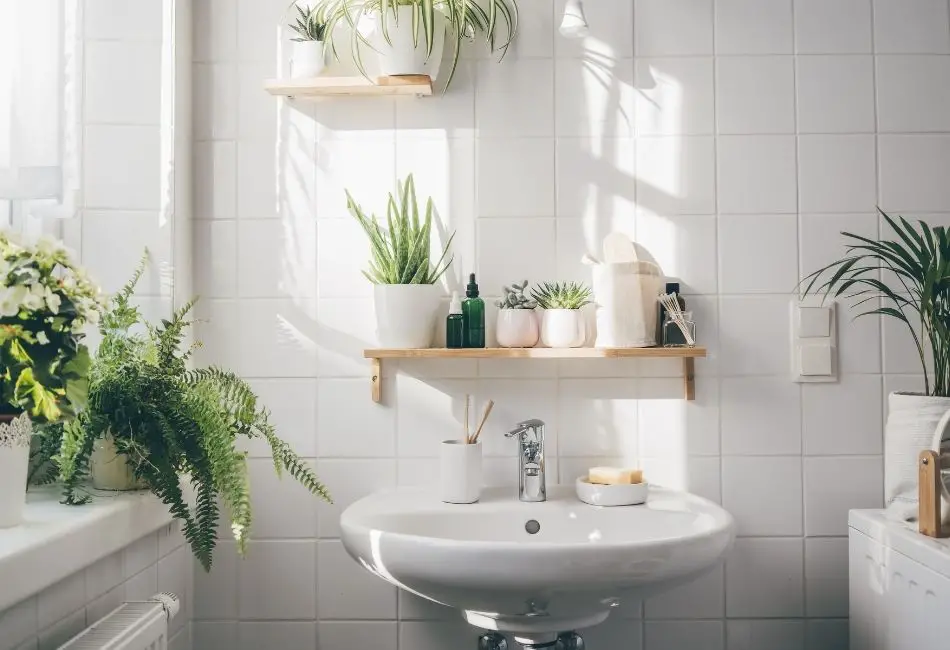
7. Number of basins
The majority of bathroom sinks have a single basin, but there are some that come with two basins.
8. Accessories
Bathroom sinks generally come with a soap dispenser or toothbrush holder. There are not many additional features that come with bathroom sinks because they generally serve one purpose-to provide a place for people to wash their hands and face.
Is It Possible To Use A Kitchen Sink As A Replacement For Your Bathroom Sink?
The simple answer to this question is yes it’s possible to use a kitchen sink as a replacement for your bathroom sink, but the main question is SHOULD YOU? while it is possible to use a kitchen sink as a replacement for your bathroom sink, there are some things you need to take into account before making the switch.
- Kitchen sinks typically have more features than bathroom sinks, such as a sprayer or extra basin, so you’ll need to make sure your new sink has all the functionality you need.
- Kitchen sinks are typically bigger than bathroom sinks, so they may be a better fit for larger bathrooms. Using them in small bathrooms will not be ideal and will take a lot of space.
- You may also need to reconfigure your plumbing in order to make the switch. So before making any decisions, be sure to consult with a professional and get all the facts.
Pros And Cons Of Using Kitchen Sinks In Bathrooms
Pro
The only major advantage in using a kitchen sink as a replacement for a bathroom sink is the variety in style and designs that you can choose from.
Cons
- Having a kitchen sink installed in the bathroom will not be aesthetically appealing. At first sight, it will be very obvious that the sink is not meant to be in that particular location.
- The faucet for a kitchen sink is typically placed on one side of the sink, while the faucet for a bathroom sink is typically placed in the center. This can be a problem if your bathroom sink is located on an opposite wall from where your kitchen sink is.
- The mounting for kitchen sinks is not made to fit in most bathrooms, so you’ll need to get creative with how you want to install it.
- Most importantly, using a kitchen sink as a replacement for your bathroom sink is not recommended as it can cause some serious plumbing issues.
Summary
In conclusion, while it is possible to use a kitchen sink as a replacement for your bathroom sink, it’s not advisable and there are several reasons why. If you’re happy with your current bathroom sink and don’t have any plumbing issues, then it may be best to stick with what you’ve got. If for some reason you want to use a kitchen sink in your bathroom, then it’s recommended that you consult with a professional before making any decisions.

